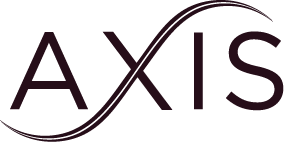In Canada, the fourth week in September marks Gender Equality Week, a time meant to highlight the progress being made towards equality and reaffirm the ongoing need to continue closing the gender gap.
There’s no shortage of reasons why the week is important — consider the ongoing gaps in pay, workplace leadership representation and political participation — but what many may not know is that the gender gap is not only prevalent in established practices, it’s still appearing in new, modern systems, especially when we look at AI.
Gender bias and AI
At a time when most people use AI, it’s vital to be aware that there is bias built into the system. A study by the Berkeley Haas Center for Equity, Gender and Leadership showed that nearly 50 per cent of AI systems demonstrated gender bias. The research found that women receive a lower quality of service when they use certain AI systems, such as voice recognition, since it doesn’t process women’s voices as well as it does men’s. It also demonstrated unfair use of information and opportunities, particularly during the job search process, such as hiring software and ad systems that deprioritize women’s applications.
The bottom line is that existing gaps can significantly impact new systems. Who develops AI and the data used to create it results in the level of bias implicated, and there are gaps in both the data and the data science workforce. According to the World Economic Forum, women make up between 25 and 30 per cent of the AI workforce worldwide, and only about 15 per cent of the executive level. Not to mention the lack of adequate data on women in all fields.
If the lack of diverse gender perspectives within the development of AI-powered technology continues, so will the lower quality of services and biased decisions about jobs, credit, health care and more.
Challenging the bias
Just as much as ongoing gender bias in AI poses concerning threats, flipping the script by taking action to dissolve the bias could pose significant benefits. UN Women says that “closing the gender digital divide could benefit 343 million women and girls, lift 30 million out of extreme poverty, improve food security for 42 million, and spark $1.5 trillion in global growth by 2030.”
Gender equality is at the heart of the solution to AI bias. It begins by advancing women in the workplace and continues with everyone assessing the data for outdated biases and misrepresentations. “The AI field needs more women, and that requires enabling and increasing girls’ and women’s access to and leadership in STEM and ICT education and careers,” states UN Women.
Gender Equality Week serves as a reminder that the work of opening doors for women and helping them excel in professional settings remains vital to closing the gender gap. When a larger diversity of people develops the modern systems we use every day, everyone benefits.
Join the conversation on women’s advancement. Become an Axis member today.

